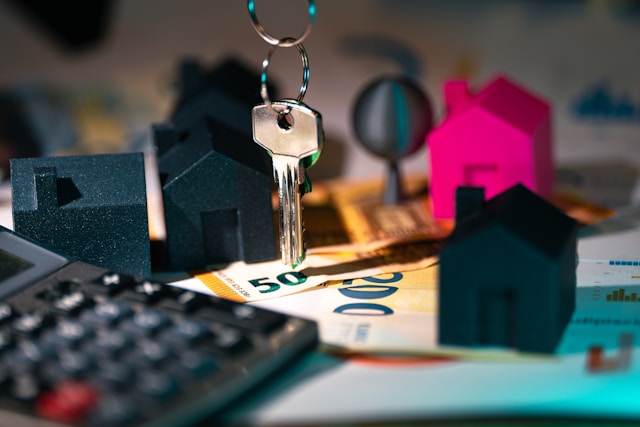
Commercial Awareness Update – W/C 22nd August 2022
August 19, 2022
Interview with Jess Burton, a future trainee solicitor at Linklaters
August 25, 2022Article by Karolina Kontor
A Closer Look at Buy Now Pay Later Platforms and the Impact of the Living Crisis on Consumer Trends
Buy Now Pay Later is not a concept as new as some may think; it can be traced back to the 19th century when instalment plans emerged to pay for expensive goods such as furniture, pianos, or farm equipment. In essence, the lending process that involves consumers, financiers and merchants could once get you a herd of cows but now is more likely to break down the cost of an iPhone 13. Buy Now Pay Later platforms provide a form of short-term financing to consumers. Platforms such as Klarna, Clear Pay and Laybuy pay on behalf of their users to companies from which they choose to make purchases. The most popular products include Pay in 30 days, Pay fortnightly, Pay in 3 instalments and financing. These have emerged in the early 21st century and were integrated with online retailing, allowing consumers to receive instant credit at the point of sale and pay later based on an agreed schedule.
How Do BNPL Platforms Profit?
Let’s explore one of the highest valued fintech start-ups worth an estimated $31 billion – Klarna. With over 87 million active users, many wonder how Klarna has emerged so quickly over the past two decades and accumulated its profits. It’s simple – many BNPL platforms utilise transaction fees, late payment fees and interest on financing. Retailers pay Klarna a transaction fee every time Klarna is used on the retailer’s website or in-store on Klarna. In 2021, despite the struggle of Covid-19, Klarna processed over 20 million transactions which means that the BNPL service is free of charge – a very attractive prospect amongst the rising cost of living. Klarna is also partnered with 250,000 retail partners internationally, including IKEA, Samsung and ASOS, showing the diverse range of products the platform can offer to consumers. For longer-term purchases between 6–36 months, Klarna has a mix of retailer fees and an interest charge at 18.9% APR. Previously, a history of positive behaviour using Klarna was enough to increase the platform’s purchasing limit. Clearpay and Laybuy similarly assess affordability by checking users’ history utilising the platform. And what isn’t attractive about softer credit checks when affordability is becoming increasingly difficult?
The Impacts of the Living Crisis
As inflation ascends, a recession looks imminent, and there are few signs that inflation will slow down. July’s consumer price index (CPI) revealed that inflation had reached the highest rate since 1981, causing consumer trends to become less predictable. The Bank of England expects to peak at 13.1% in the fourth quarter of 2022. This forecast reflects the sharp rises in gas, fuel and food prices caused by a consumer demand that cannot be supplied. Nevertheless, the latest reports have revealed that consumer spending grew in July compared to the previous month by 1.6%, which was shared in Barclaycard’s latest update. The hot weather has impacted the expenditure on clothing, beauty and electronics – all fruitful products often bought online using BNPL services. Although this may benefit BNPL platforms, consumer debt may become too difficult to control as inflation grows.
The Challenges Faced by BNPL Platforms
The pandemic has had detrimental effects on the BNPL model. Although Klarna had its most successful year halfway through the pandemic, inflation gradually spun out of control and is expected to rise to as high as 18% in 2023, currently sitting at 9.4% as of June 2022. Due to the financial strain of the pandemic, the number of people needing help with their debts is estimated to rise to 60%, causing many BNPL platforms to take different and more rigid approaches pushed on them by credit agencies. As of the 1st of June, Klarna has been obliged to start reporting customer debts to credit agencies, which could affect consumer credit ratings from 2023. Although Clearpay and Laybuy continue to be currently unregulated, as consumer debts are spinning out of control, it may not be long before these platforms are also forced to take action and take a more rigid approach. The impact of tightening credit checks has been injurious to Klarna, which has laid off 10% of its staff. As workload increases, this could seriously affect customer retention, customer satisfaction, and staff motivation. This poses concerns as Klarna is a strong competitor amongst BNPL platforms and has had to take drastic measures. Other BNPL platforms fear for their future as consumer confidence is spiralling out of control amongst the living crises. `
The Financial Conduct Authority has recently slammed BNPL platforms such as Klarna and Clearpay for using social media influencers to advertise their services. It has been criticised that it is deceiving for consumers to be encouraged through social media to use BNPL services as it does not warn of risks such as taking on unaffordable debt. This advertising tactic has been targeted as unfair and misleading as more consumers consider using such services due to the increased cost of living. The multibillion-pound companies have been ordered to ensure that consumers have the correct information to make better decisions in financially vulnerable circumstances.
If BNPL platforms are to survive in the living crisis, they must take control of consumer debt and provide supportive information. After all, the unpredictability of the economic crisis may cause changes to how these platforms operate, as seen with Klarna. This signifies that they must adjust quickly to power through as consumer confidence plummets due to the bitter impacts of rising inflation rates.





